Apple’s iPad Pro, at 12.9 inches, bigger than a laptop
Apple goes for growth with the new iPad Pro, which bridges the gap between tablet and laptop.
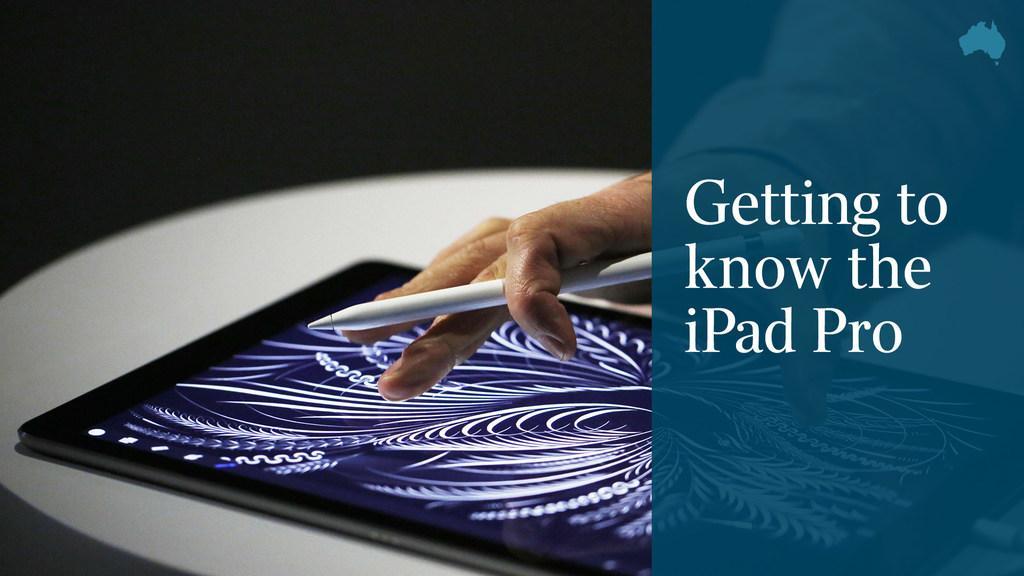
Apple has achieved an interesting milestone with its gigantic new 12.9-inch iPad Pro. It has produced a tablet bigger than one of its laptops, the 11-inch MacBook Air. So you can have two radically different Apple experiences with devices of similar screen size.
Picking up the iPad Pro is like picking up a large, empty drinks tray. At Apple’s launch last week, I could hold it comfortably with just one hand. At 713g, it’s about 1.6 times the weight of iPad Air 2, or not that much more than iPad 2 from bygone days. It’s light, thin yet so big.
If you’re using it curled up reading, you’ll probably use two hands, for balance if nothing else. While 264 pixels per inch is not the highest resolution screen Apple has produced (iPhone 6S is 326ppi), it’s impressive to reproduce the same screen resolution as iPad Air 2 on a screen that’s 78 per cent bigger. It gives iPad Pro the look of something special.
But I’m not convinced that users will spend most of their time using iPad Pro in pure tablet mode. It’s likely they’ll use it with Apple’s new grey Smart Keyboard attached. Sure, the video watching experience on iPad Pro is the most impressive you’d see on a tablet, and placing it flat on a table or on your lap is an option. But it makes more sense with its smart cover keyboard attached or with Apple’s stylus device, Apple Pencil.
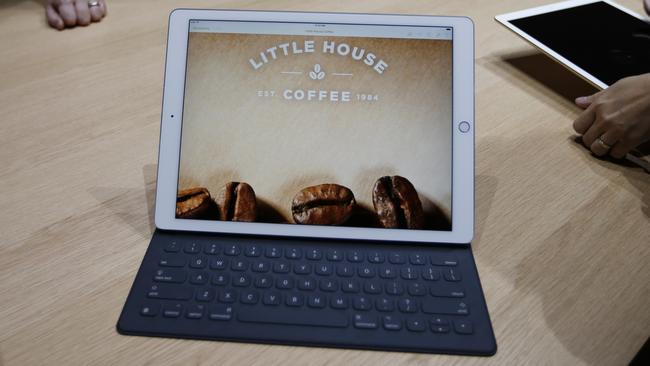
As for the keyboard, I found typing to be comfortable. It’s not the same as using a desktop keyboard, but there’s enough give and haptic feedback to make typing comfortable. iPad Pro is big enough to need propping up at the back, but Apple hasn’t resorted to the built-in kickstand that Microsoft uses with Surface.
If you want to try another keyboard, Logitech has announced one that leverages the Pro’s new smart connector. It not only transmits data from tablet to keyboard, it lets the keyboard operate without being charged separately. I already use a Logitech keyboard with iPad Air 2.
This iPad Pro is only a tad smaller than the 13-inch MacBook Air, and even the 13.3-inch MacBook Pro. But the experiences are so different. With a MacBook Air or MacBook Pro, you get Apple’s fully blown desktop operating system, OSX that supports regular programs as well as Mac App store apps, and uses a keyboard and mouse. Unlike the Microsoft competition, it doesn’t have a touch screen interface.
An iPad Pro of roughly the same size with a keyboard is different. You get iOS9, the operating system used by iPhones and iPads, and you use the same apps you have on your phone or tablet. But you can’t use standard installable Apple programs and it’s not designed for a mouse. But it has a touch display.
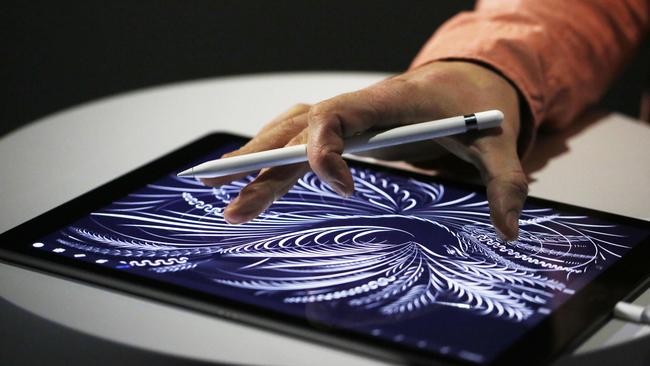
So with both an iPad Pro and MacBook available, you have a decision to make. If you’re an artist, sketcher, graphics designer, cartoonist, architect or engineer, you might go with the Pro. If you’re in business or a developer, the choice isn’t so clear. You may gravitate towards a MacBook, especially if you have invested in software that won’t run with iOS, or go with the Pro and use apps that substitute for that software.
In Microsoft’s world, you don’t have this dilemma. Both tablets and notebooks run regular Windows. Tablets with a separate operating system bit the dust with the demise of Windows RT. And most new Windows notebooks and laptops have touch-sensitive displays.
As for processor and graphics speed, Apple says the A9X chip used on iPad Pro is faster than 80 per cent of portable PC processors shipped in the past 12 months. At its San Francisco launch it demonstrated an iPad Pro editing three streams of 4K movies simultaneously — no mean feat. But we’ll have to wait for benchmarks after iPad Pro hits the market to see how the A9X rates against the likes of Intel i3, i5 and i7 processors.
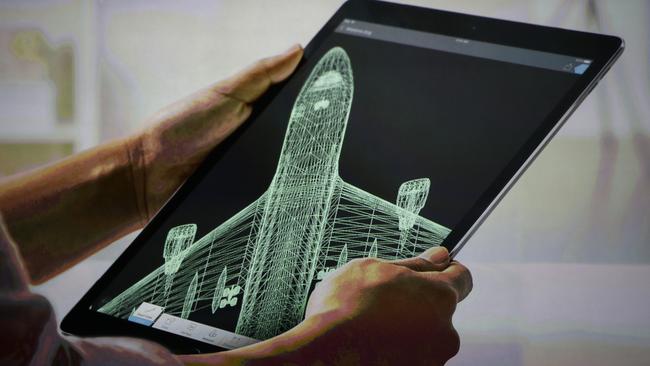
The new iOS 9 is geared towards making efficient use of that large 12.9-inch iPad Pro display. You can comfortably use the onscreen soft keyboard without it taking up too much screen real estate. iOS 9 lets you split the screen down the centre and display two apps simultaneously side by side. That looks great on the Pro.
Additionally, you can display a video window above this using a feature called Picture in Picture. On iOS 9 devices you can have a column down the side displaying apps such as your email inbox — something I’ve found incredibly useful when Beta-testing iOS9.
Apple has avoided apps looking distorted on a bigger screen by designing the width of the iPad Pro to be the same height of iPad Air, so apps can display in iPad Air size but with room left over.
At the Apple launch event I also scribbled away with Apple Pencil and tried variations such as pressing lighter and harder to alter line thickness, and using it obliquely to shade in colour. I also ruled lines with virtual rulers. It was like being back at primary school with my Derwent colour pencil set.
The verdict: it felt like a pencil. That may sound trite but it’s a technical achievement to avoid any discernible lag between pressing on the iPad display and virtual ink flowing on the screen. And the pencil was light to hold in the hand. Apple has made a big play on the accuracy of Pencil, something that will be incredibly important to professionals who now use, say, Wacom Cintiq.
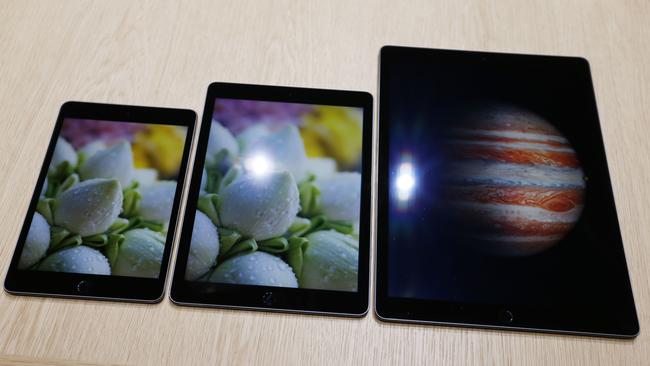
The downside to iPad Pro is due to it being an iOS device. It will not run standard Apple programs. Sure, there are great options in the wings, with Microsoft bringing a cleverly tweaked version of its Office suite to the Pro. Cool features include creating professional-looking graphics by drawing with your hand.
Adobe has a new suite of Creative Cloud mobile apps for the Pro where, for example, you can put together a page design using your fingers in seconds, and there’s AutoCAD 360 from Autodesk. Hobart-based Savage Interactive is bringing its Apple design award-winning Procreate illustrative app to the Pro at launch. Being Apple, it’s a matter of time before the iPad Pro software offering is feature rich, but it will take work.
Overall, iPad Pro is a fascinating move by Apple into a market that finally is turning profitable. Microsoft told The Wall Street Journal last week that it made $US3.6 billion ($5.1bn) in revenue on Surface in the past fiscal year. That was after staggering initial losses.
How iPad Pro plays out will be interesting. On the one hand, it may not be fantastically successful; on the other, if success is great, its souped-up iOS ecosphere could eventually consume traditional OSX. We’ll wait and see.
We don’t have pricing and availability of iPad Pro in Australia but we know in the US it will start at $US799 in November so it looks like pricing will be in the same range as the MacBook Air.
Chris Griffith travelled to San Francisco courtesy of Apple.



